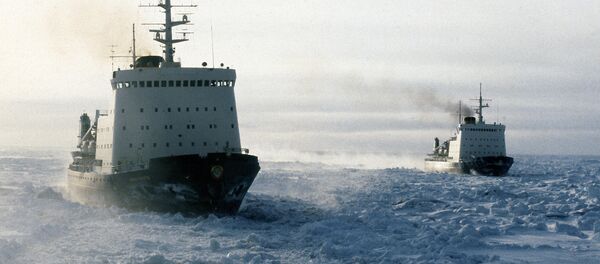So why is the Arctic melting so fast and the Antarctic so slowly? It's a bit complicated. On the surface, the Arctic and the Antarctic have a lot in common: cold, sparsely populated snowy wastes at the farthest reaches of the Earth. But they differ in one fundamental sense: the Arctic is an ocean surrounded by land (like the upper reaches of Alaska, Canada and Russia), while Antarctica is a land mass surrounded by oceans. What we think of as the Arctic is essentially a gigantic ice cube in the Arctic Ocean, while underneath the snow and ice of Antarctica is land.
Essentially, two effects of global warming offset one another when it comes to Antarctica. Both poles see their sea ice melting at uncomfortable rates (with both poles hitting record lows in February), but Antarctica also benefits from snowfall, which has caused ice sheets to form in some sections.
Climatologists point to increased snowfall as another side effect of a warmer planet. One consequence of global warming is an increase in ocean evaporation, as hot temperatures over the sea send water vapor into the atmosphere. The more water vapor in the atmosphere, the more intense rain and snowfall become.
Antarctic snowfalls used to be rarer, but the warming of the continent has caused larger and more frequent snowfalls. Simultaneously, Arctic ice has been on a steady decline since the early 2000s.
So why doesn't it cut both ways? Why does snow help sea ice remain in Antarctica but not the Arctic? Simply put, the Arctic air is very cold, which allows little water vapor to escape into the atmosphere. This means there is little material to form snow, making snowfall rare (though not unheard of) in the Arctic.
Antarctica is also insulated from global warming trends as it has its own set of wind and water currents, while the Arctic Ocean is heavily affected by wind and water from the neighboring Atlantic.




